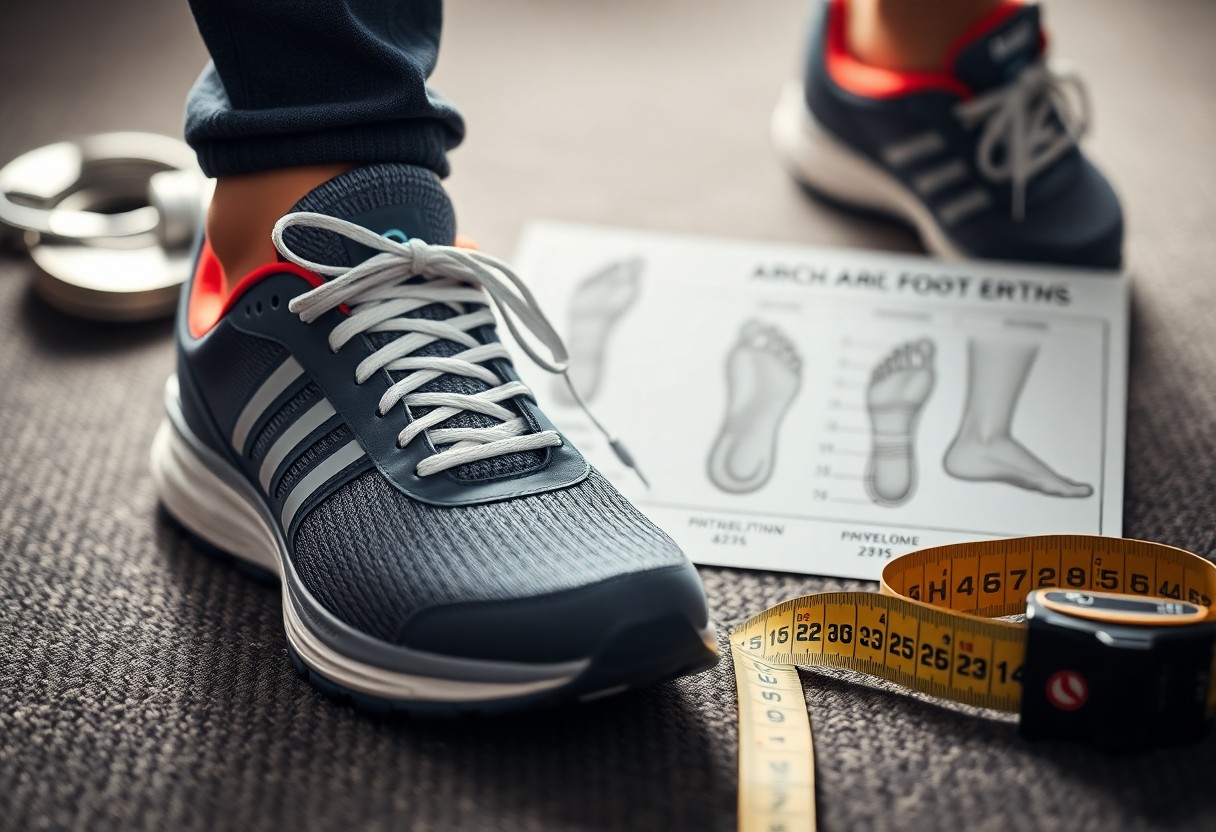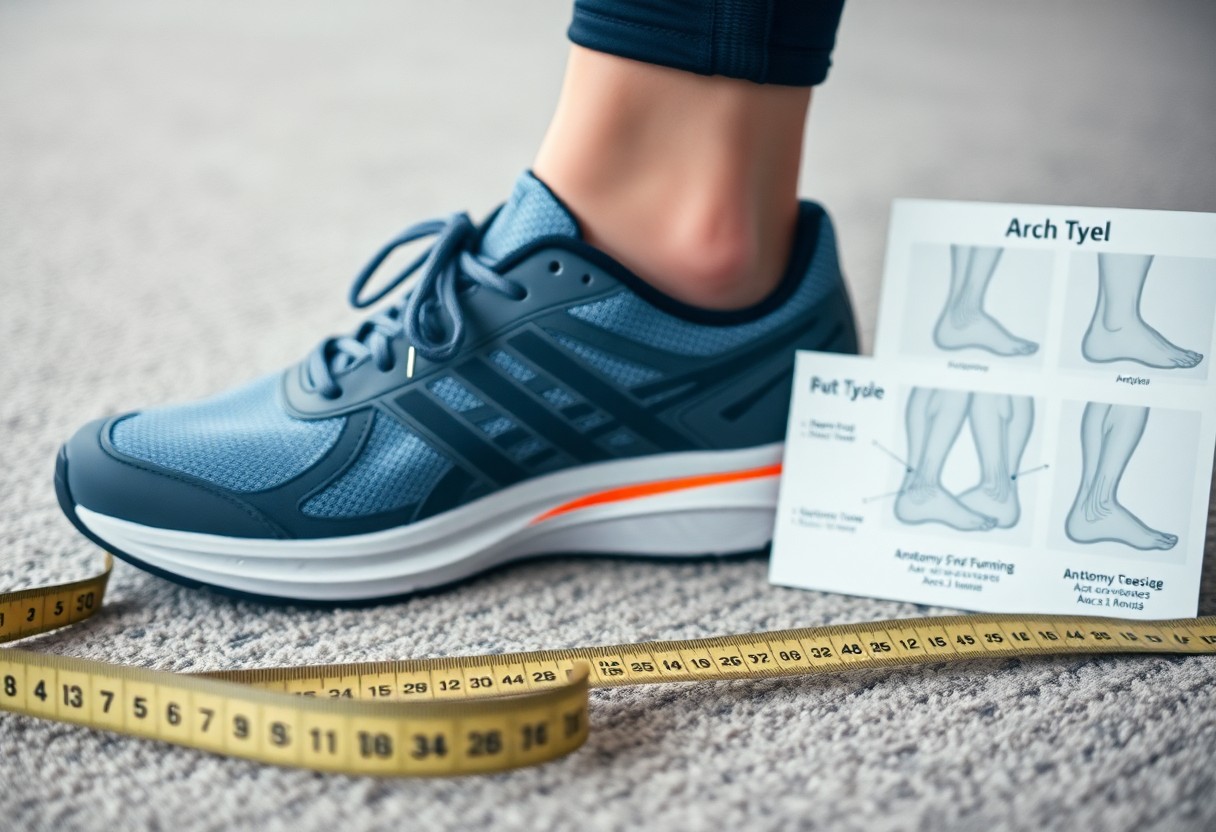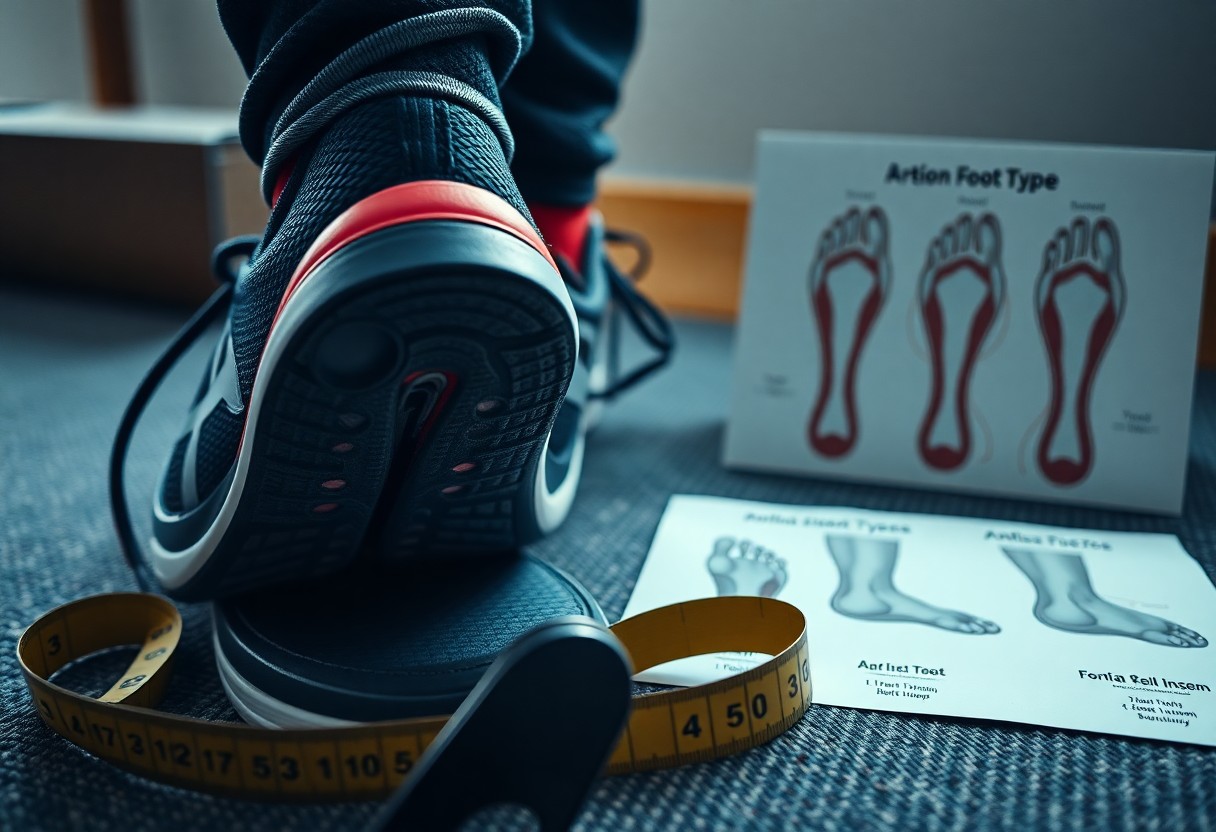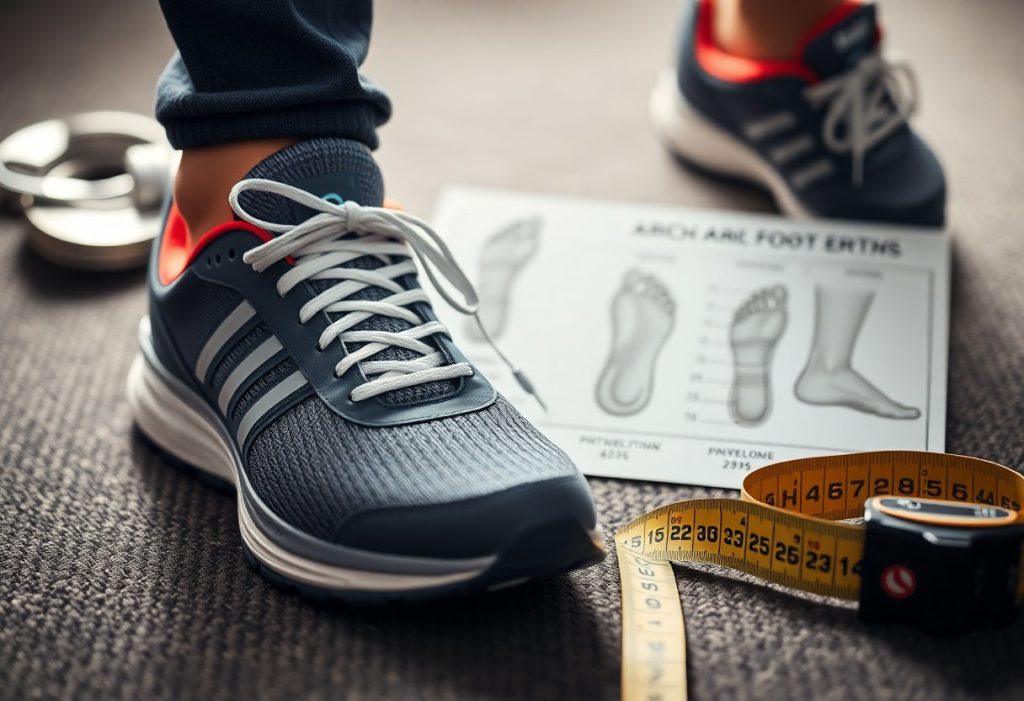Supporting your feet effectively goes beyond merely adding arch support to your footwear. Surprisingly, most people do not actually need arch support in their shoes. Scientific research indicates that avoiding artificial arch support may strengthen your foot muscles over time. Relying on these rigid supports can lead to muscle weakness, as the human foot is designed to have natural arches that flex and adjust to different surfaces. Restricting this natural movement can negatively impact your foot health in the long run. This detailed article aims to unravel the complexities of arch support, empowering you to make educated choices about your foot health.

Tracing the Evolution of Arch Support in Footwear Design
The natural support system of your feet has played a vital role in the evolution of footwear over the centuries. The concept of arch support gained widespread acknowledgment in the 1920s when Dr. William Scholl introduced commercial orthotics. Before this innovation, individuals relied on the inherent strength and flexibility of their feet to navigate daily life. Understanding this historical backdrop sheds light on the advancements in our comprehension of foot health and underscores the necessity of reassessing contemporary footwear design approaches.
Exploring the Shift from Traditional to Contemporary Footwear Practices
The progression of footwear design reveals that ancient societies primarily utilized simple, flat sandals or often went barefoot, facilitating natural foot development and strength. The feet of our ancestors thrived with robust and flexible structures, unencumbered by artificial supports, as evidenced by studies on indigenous communities who continue to embrace traditional footwear practices. This historical lens emphasizes the crucial role of natural foot mechanics in sustaining foot health, often overlooked in modern trends.
Evaluating How Modern Shoe Design Affects Foot Health
By the mid-20th century, particularly in the 1950s, shoe manufacturers began to standardize built-in arch support in footwear. Today, structured arch support is a common feature in most modern shoes, despite limited scientific evidence supporting its universal necessity. This trend mirrors changing consumer expectations and industry norms yet prompts critical questions regarding the long-term effects of such designs on foot health. With approximately 70% of shoes now equipped with arch support, it becomes imperative to assess whether this dependence is genuinely beneficial or potentially harmful.
Research published in the Journal of Foot and Ankle Research suggests that an overreliance on arch support may lead to muscle weakness in the feet. As a result, many podiatrists advocate for regular barefoot walking and the use of minimally supportive footwear to maintain natural foot strength and promote overall foot health.

Understanding the Intricate Anatomy of the Human Foot
Your feet consist of 26 bones, 33 joints, and over 100 muscles, functioning most efficiently when allowed to move freely. The arch of the foot is a self-supporting structure that strengthens through regular use; however, it weakens with artificial support. Research indicates that 75% of individuals using conventional shoes with arch support exhibit reduced foot muscle activity, leading to compromised natural foot strength over time and underscoring the necessity of allowing your feet to engage in natural movements.
Recognizing the Advantages of Natural Foot Mechanics
The natural design of your feet is an engineering marvel, featuring a complex system of self-supporting structures. Walking barefoot or in minimal shoes provides your feet the opportunity to move through a complete range of motion, allowing your arches to flex and strengthen organically. Studies indicate that individuals who frequently walk barefoot or utilize minimal footwear develop stronger foot muscles and more stable arches compared to those who rely on heavily supportive shoes. This highlights the importance of embracing natural movement for optimal foot health, as it promotes the body’s ability to maintain its own structural integrity.
Implementing Strategies to Enhance Foot Muscle Function and Strength
Disrupting your foot’s natural movement can impede its development and functionality. Your foot muscles require consistent engagement through natural activities to retain their strength. Research published in Nature highlights that wearing shoes without arch support contributes to the development of stronger intrinsic foot muscles. This connection underscores the importance of natural movement for achieving optimal foot health, especially for individuals dealing with discomfort or weakness in their feet.
Additionally, it is essential to understand the consequences of wearing shoes with built-in arch support. When these shoes are worn, foot muscles may become less active, resulting in potential weakness over time. Studies have demonstrated that transitioning to minimal footwear can lead to a remarkable improvement in foot muscle strength by as much as 60% within eight weeks. However, it is crucial to approach this transition gradually, particularly if you have existing foot conditions, to prevent injury and facilitate a healthy adaptation process.
Reviewing Scientific Studies and Evidence Related to Foot Health
If you’re eager to understand the science behind arch support, numerous studies show that your feet can strengthen without artificial supports. Various investigations indicate that natural foot movement promotes superior muscle development and enhances arch stability, emphasizing the critical role of biomechanics in foot health and the potential risks associated with excessive reliance on artificial supports.
Highlighting Key Scientific Findings on Arch Support
Among the most significant research findings, a study published in Nature reveals that individuals who wear minimal footwear develop foot muscles that are 50% stronger compared to those who wear traditional supportive shoes. This evidence supports the idea that regular movement and exercise enable your feet to maintain their arches naturally, reinforcing the importance of selecting appropriate footwear.
Comparative Analysis of Footwear Choices Among Various Populations
A Comparison of Traditional and Minimal Footwear Users
| Traditional Shoe Users | Minimal Shoe Users |
| Exhibit higher rates of flat feet | Demonstrate superior arch strength |
| Show weaker foot muscles | Exhibit stronger foot muscles |
A thorough examination of different populations highlights significant differences in foot health. The type of shoes you choose to wear can significantly influence your foot structure, underscoring the importance of actively evaluating your footwear selections.
Insights from Global Population Studies
| Developed Countries | Barefoot Communities |
| 20% flat foot occurrence | 3% flat foot occurrence |
| Higher reliance on arch support | Natural arch strength |

Challenging the Support Paradigm in Footwear Choices
By questioning commonly accepted beliefs, relying excessively on arch support in shoes can undermine your feet’s inherent strength. The human foot is intricately designed, featuring a sophisticated network of muscles, tendons, and ligaments that work together to provide natural support. When artificial arch support assumes this role, foot muscles may become less active, leading to gradual weakening and reduced effectiveness in daily activities.
Understanding the Cycle of Dependency on Arch Support
The habitual use of arch support creates a damaging cycle. Feet can become dependent on external support, leading to muscle atrophy. Research indicates that 70% of individuals who regularly use arch support report heightened discomfort when walking without their supportive shoes, illustrating the emergence of this dependency that can adversely affect overall mobility and comfort.
Linking Muscle Weakness to Excessive Arch Support Utilization
Wearing footwear with built-in arch support may weaken your intrinsic foot muscles by as much as 50%, according to findings published in Nature. This weakening can compromise your feet’s natural arch support system, possibly leading to conditions such as flat feet and various foot-related issues. It’s crucial to recognize that this muscle weakness can extend beyond your feet, as weakened foot muscles can negatively impact your overall posture and balance. Research suggests that individuals who transition to minimal footwear often experience a 60% increase in foot muscle strength within six months, highlighting the benefits of avoiding unnecessary supports.
Exploring Natural Alternatives for Improved Foot Health
If you seek to step away from traditional arch support, several natural alternatives can enhance foot strength. These strategies focus on allowing your feet to perform as intended, fostering the development of stronger foot muscles and more stable arches through natural movement and practices that promote foot health.
Adopting Minimalist Footwear for Optimal Natural Movement
Minimalist shoes, characterized by zero drop soles, wide toe boxes, and flexible materials, encourage natural foot movement. These designs allow your feet to move freely, which aids in maintaining proper foot mechanics and fostering natural arch strength. Research shows that regular use of minimal footwear can enhance foot muscle strength by up to 60% through everyday activities, reinforcing the significance of selecting suitable footwear for your lifestyle.
Implementing Safe Strategies for Transitioning to Minimal Footwear
When contemplating a shift to minimalist footwear, it is crucial to take a careful and gradual approach to ensure your safety and comfort. Start by wearing minimal shoes for short durations, gradually increasing the length of wear over several weeks. This method helps to prevent overuse injuries while your feet adapt to their newfound freedom, ensuring a smoother transition that supports long-term foot health.
A successful transition should ideally incorporate specific exercises aimed at strengthening the feet. Begin with 10-15 minutes per day in minimal footwear, gradually adding an extra 5-10 minutes each week. Incorporate exercises such as toe spreads and brief barefoot walks on safe surfaces. This incremental approach allows you to minimize the risk of common transition-related injuries while effectively building your natural arch strength, ultimately fostering better overall foot health.
Considering Individual Medical Factors for Optimal Foot Health
It is essential to recognize that your foot health requires personalized consideration. While natural foot movement is advantageous for muscle strength, specific medical conditions may necessitate particular forms of support. Factors such as your foot structure, level of activity, and any existing conditions will influence your ideal footwear needs, highlighting the necessity for individualized evaluations.
Recognizing Conditions That May Necessitate Arch Support
Contrary to popular belief, arch support is not universally required. Nevertheless, individuals suffering from acute injuries, severe flat feet, or other specific medical issues may find temporary or permanent arch support beneficial. Research shows that only 10-20% of the population genuinely requires specialized arch support for medical reasons, underscoring the importance of personalized assessments to ensure optimal foot health.
Guidelines for Comprehensive Foot Health Evaluations
To make informed choices about your footwear, it is advisable to seek guidance from a foot health professional. Comprehensive evaluations should include gait analysis, assessment of foot structure, and review of medical history. These components are crucial for determining if arch support is necessary or if transitioning to minimal footwear is a feasible option for your unique circumstances.
Support from a qualified professional can offer clarity and direction for your foot health journey. An in-depth assessment should involve measuring arch flexibility, evaluating muscle strength, and analyzing walking patterns. Your healthcare provider should also consider your daily activities and any previous foot injuries to develop an effective treatment plan tailored to your specific needs and lifestyle.
Assessing Footwear Choices and Their Effects on Foot Health
Your choice of footwear plays a significant role in influencing your overall foot health. You now realize that arch support is not essential for most people and may, in fact, contribute to muscle weakening over time. Your feet possess inherent strength and flexibility, functioning optimally when allowed to operate as nature intended. If you are contemplating a transition to minimal footwear, initiating this process gradually will assist your feet in adapting effectively. The evidence strongly indicates that permitting your feet to function without artificial support can enhance muscle strength and improve foot health for the majority. Always consider your personal circumstances and consult a foot health professional for specific concerns regarding your foot health.
Your Most Common Questions About Arch Support and Foot Health Answered
Is arch support necessary for healthy feet?
Generally, healthy feet do not require arch support in shoes. Studies indicate that natural foot strength develops more effectively without artificial support. The muscles and arches of the foot function best when allowed to operate naturally. This is corroborated by research on populations that frequently go barefoot or prefer minimal shoes, which demonstrate stronger foot muscles and fewer arch-related issues.
Can prolonged arch support use weaken my feet?
Indeed, long-term reliance on arch support can result in weakened foot muscles. When artificial support takes over the role of foot muscles, these muscles become less engaged and gradually diminish in strength. This creates a cycle of dependency. Research published in Nature suggests that individuals who consistently wear conventional shoes with arch support often display weaker foot muscles compared to those who choose minimal footwear.
Who may actually require arch support in their footwear?
Specific individuals with particular foot conditions, injuries, or medical issues may genuinely benefit from arch support. This includes those diagnosed with flat feet, certain foot injuries, or structural abnormalities. However, these situations should be assessed by a foot health professional capable of devising an appropriate treatment plan. The overarching goal should be to restore natural foot function whenever possible, rather than depending on permanent support.
The Article Arch Support: Essential Facts About Shoe Necessities Was Found On https://limitsofstrategy.com
The Article Arch Support: Key Insights on Essential Shoe Needs First Appeared ON
: https://ad4sc.com




Your exploration of arch support in footwear raises several intriguing points that resonate with modern discussions on foot health and biomechanics. The perspective that many individuals may not require artificial arch support challenges a long-standing assumption prevalent in orthotic practices. It’s fascinating to consider how historical context plays into our current understanding of foot health.
I appreciate the way you framed the discussion around arch support and foot health. It really is quite intriguing how much our understanding has evolved, especially considering the widespread reliance on orthotics historically. I’ve come across some research suggesting that the way we approach foot care has often been more about convenience and quick fixes rather than a focus on long-term health.
Your exploration of arch support really challenges the conventional wisdom we’ve lived by for decades. It’s intriguing to consider that many of us might have been relying too heavily on artificial supports when our feet are designed to adapt naturally to various surfaces. I wonder how this shift in understanding might change consumer behavior in footwear marketing.
It’s interesting to think about how our understanding of arch support has evolved. The idea that our feet are designed to adapt to different surfaces makes a lot of sense. I’ve spent quite a bit of time reading about how traditional footwear can sometimes create more problems than they solve.
It’s interesting to think about how foundational principles can often be overlooked in favor of trendy solutions, much like our views on arch support; diving into the essentials of hosting might just shift our perspective on what really matters for a solid online presence.
‘Why Hosting Matters – Understanding the Foundations’
https://www.intrepid21.com/why-hosting-matters-understanding-the-foundations/.
It’s definitely a fascinating topic when you think about how our understanding of arch support has become more nuanced over time. The notion that our feet naturally adapt to various surfaces speaks to a larger conversation about how we often overlook the body’s capabilities in favor of quick fixes that can lead to long-term issues. It makes you wonder how many other areas we apply that same kind of thinking, choosing convenient solutions without fully understanding the foundational principles at play.
It’s really intriguing to think about how much our understanding of foot health has evolved over the years. When I read your post, I was reminded of my own experiences with footwear and how quickly we can fall into the trap of believing that more support is always better. I used to rush out to buy shoes with the latest arch supports and all the bells and whistles, thinking that would solve my foot pain. But eventually, I started noticing that when I wore those shoes for prolonged periods, my feet felt weaker and more fatigued.
It’s interesting how our perceptions of support and comfort in footwear can shift over time. I can relate to your experience with the allure of shoes that promise relief through high-tech features. I went through a phase where I thought that cushioning and arch support were the answers to my foot issues, too. But, like you, I found that relying on all that built-in support might have contributed to my discomfort rather than alleviated it.
I find the topic of arch support in footwear really fascinating, especially considering how much emphasis we typically place on shoe design for foot health. It’s interesting to think that while technological advancements have improved comfort in many ways, they might not always align with what our bodies actually need. Growing up, I thought that if I had any foot discomfort, the solution was to get shoes with better arch support, but your post challenges that idea by highlighting how natural movement is fundamental to foot strength.
The exploration of arch support presents such a fascinating intersection of biology, technology, and even our cultural understanding of health and wellness. I found it particularly striking that we often default to the idea that more support equals better health. For many, especially those of us who spend long hours on our feet, running towards cushy shoes with built-in arch support feels like the only sensible option. Yet, discovering that artificial arch support may actually inhibit the natural function of our feet challenges everything we’ve been conditioned to believe.
You’ve touched on such an intriguing point about how our views on arch support are shaped by both biology and culture. It’s easy to get caught up in the belief that more support equals better outcomes, especially when we’re bombarded with messaging that encourages us to seek comfort for those long hours on our feet.
The exploration of arch support and its role in foot health presents a fascinating intersection between anatomy, biomechanics, and cultural influences in footwear design. Your discussion on the potential drawbacks of artificial arch support resonates with a growing body of evidence advocating for a more natural approach to foot care. I found it particularly compelling that the human foot is designed to adapt and flex, suggesting that many traditional concepts of support may actually hinder rather than help our foot strength and overall mobility.